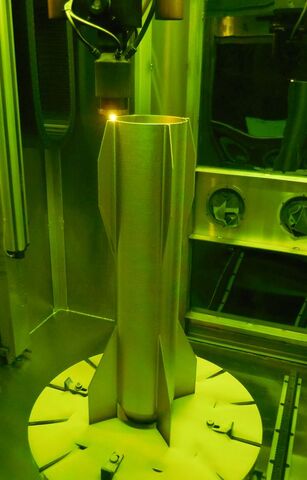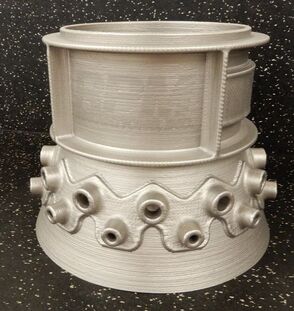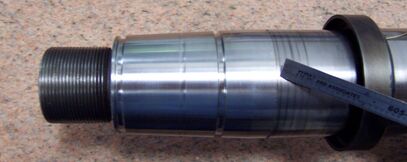RPM Innovations' Directed Energy Deposition (DED) technology is an additive manufacturing process in which metal powder is injected into the focused beam of a high-power laser under tightly controlled atmospheric conditions. The focused laser beam melts the surface of the target material and generates a small molten pool of base material. Powder is delivered into this same spot and is absorbed into the melt pool, thus generating a deposit. The resulting deposits may be used to Freeform or Repair metal parts for a variety of applications.
DED is a blanket name that encompasses many industry terms such as: 3D Metal Printing, Blown Powder Deposition, Laser Metal Deposition, and Direct Metal Deposition.
DED is a blanket name that encompasses many industry terms such as: 3D Metal Printing, Blown Powder Deposition, Laser Metal Deposition, and Direct Metal Deposition.
FREEFORM
The Freeform process starts with CAD data that is used to define near net shape parts without any hard tooling or forming.
Freeform provides the flexibility to generate parts with complex geometries, internal passages or cavities, as well as combine part assemblies into a single component, eliminating the need to join parts with processes that are less predictable.
Freeform can also selectively add unique features that are deposited directly onto conventional castings or forgings (providing a metallurgical bond).
Reduce machining time and waste to create a hybrid component that joins additive with conventional technologies
Freeform provides the flexibility to generate parts with complex geometries, internal passages or cavities, as well as combine part assemblies into a single component, eliminating the need to join parts with processes that are less predictable.
Freeform can also selectively add unique features that are deposited directly onto conventional castings or forgings (providing a metallurgical bond).
Reduce machining time and waste to create a hybrid component that joins additive with conventional technologies
REPAIR - CLADDING
DED can be utilized to repair worn or damaged parts that were considered non-repairable with conventional techniques.
Low heat input combined with a metallurgical bond repair provide a quality deposit to restore critical components at a lower cost than replacing a piece with a new part.
Additionally, DED may be utilized to clad a more functional material onto conventionally manufactured components, improving the wear resistance specifically to the locations of interest.
Low heat input combined with a metallurgical bond repair provide a quality deposit to restore critical components at a lower cost than replacing a piece with a new part.
Additionally, DED may be utilized to clad a more functional material onto conventionally manufactured components, improving the wear resistance specifically to the locations of interest.










